by Shemuel Meir
The Joint Comprehensive Plan of Action (JCPOA), the multilateral agreement that restricts Iran’s nuclear program and prevents it from developing nuclear weapons, has reached a critical juncture. In the midst of the crisis surrounding the future of the JCPOA, Yukiya Amano passed away. Amano, who was the head of the IAEA from 2009 until his death, played a major role in overseeing the implementation of the nuclear agreement, which was signed in the summer of 2015.
This has been the strictest implementation of the most intrusive monitoring plan in the history of nuclear agreements. The IAEA published 15 inspection reports proving that Iran was in compliance with the agreement, until the beginning of July 2019, when the country announced that it was deviating from the JCPOA.
Dozens of heads of state and foreign ministers published tributes and expressed their profound grief at the death of the Japanese diplomat, commending the exceptional diplomatic skills, intellectual integrity, and outstanding professionalism that he brought to his role. The international community understood how grave his death was at such a critical moment.
Israeli Prime Minister Netanyahu was not among the heads of state who mourned the death of Amano, nor did he publish a tribute in his name. Netanyahu’s lack of sympathy for Amano has been evident all along, reaching its peak in September 2018, when Netanyahu directly addressed the IAEA director from the stage of the UN General Assembly. “Once and for all, tell the world the truth about Iran,” implored Netanyahu.
A series of statements and leaks this summer provide an indication of Netanyahu’s intentions – with the assistance of United States national security advisor John Bolton – to bring about a quick and final dismantling of the JCPOA. The first indication, which passed under the radar, can be found in the report from the veteran military commentator Alex Fishman who has access to sources among the highest echelons in the defense circles. According to Fishman, Bolton met with Netanyahu and with Ze’ev Snir, the head of the Israeli Atomic Energy Commission, to coordinate positions on the “Iranian violations of the JCPOA” in advance of the annual meeting of the IAEA Board of Governors, which will take place this coming September. Netanyahu’s Iran “lecture” at the annual UN General Assembly will also take place in September.
Meanwhile, as in a suspense film, the “atomic archive” returned to center stage in the attempts to dismantle to JCPOA. Netanyahu promised “more evidence will be revealed soon” from the atomic archive. And indeed, in his speech at the Herzliya Conference, Mossad Director Yossi Cohen hinted that documents from the atomic archive point to an active Iranian nuclear weapons program. His lecture contained a new element, which passed under the radar: the atomic archive enabled Israel to send IAEA inspectors to hidden locations containing nuclear materials, and to “destroy them.”
Two weeks later, in early July, there was a nuclear scoop. In an exclusive report on Israel’s Channel 13, “senior Israeli sources” were quoted as asserting that, based on material from the atomic archive, the IAEA had found that soil samples from the “radioactive warehouse” in Teheran contained “traces of radioactive material.” According to the report, this was proof of the existence of banned nuclear material and a violation of the Non-Proliferation Treaty (NPT) to which Iran is a party. The channel’s military commentator added another element to the report, emphasizing that the Israeli revelation was proof that Iran continues to secretly develop nuclear weapons even after signing the JCPOA, and that it was deceiving the signatories of the agreement. This was a double violation on Iran’s part, of both the JCPOA and the NPT.
These leaks were apparently an effort on Netanyahu’s part to goad the IAEA to present “incriminating findings” that were revealed by the exclusive Israeli leaks. Netanyahu needed an “incriminating” IAEA report to convince the European signatories (France, the UK, and Germany) to withdraw from the JCPOA – and in doing so to finally bring about its demise. Through public discourse, think tank articles, and leaks to the media, Netanyahu is trying to create the impression that the Israeli reports are actually factually verified IAEA reports revealing a grave Iranian violation that is occurring right now.
This is not necessarily the case. Let’s look at the facts.
In March 2019, following an intelligence examination at the IAEA headquarters of materials that Netanyahu provided from the atomic archive, IAEA head Amano sent inspectors to the “radioactive warehouse” in Teheran. This was an undeclared site that had not been visited in the past by IAEA inspectors. The inspectors visited the suspicious warehouse a number of times. This is an indication of positive cooperation on Iran’s part, and of its fulfillment of the JCPOA obligations and of the Additional Protocol regarding inspection visits to suspicious undeclared sites. The nuclear agreement’s inspection mechanisms are functioning without obstruction, in spite of the American pressures to demolish the agreement.
This also contradicts Israeli claims that Iran is obstructing the IAEA’s work and not allowing its inspectors to enter undeclared sites. It is worth pointing out that, in addition to hundreds of inspection visits per year to declared sites, IAEA inspectors carried out tens of inspection visits to suspicious undeclared sites in Iran. In 2017, for example, there were 35 special complementary visits to undeclared sites. This means that these types of visits took place almost every 10 days, which is unprecedented when compared to the years preceding the JPCOA.
Going back to the radioactive warehouse: even if there were banned radioactive materials in the warehouse, from a technical perspective, it is impossible to erase such traces even many years after the materials have been removed. This is the nature of nuclear materials. The IAEA inspects the environmental samples for technical analysis, and for demanding that Iran provide answers, including dates, about the materials and the equipment that were present in the warehouse. These are IAEA procedures and they take time.
The IAEA is well aware of the heavy responsibility that it bears. It has proven in the past that it does not treat any findings lightly.
The IAEA has not yet published anything regarding the samples taken from the radioactive warehouse. Mark Fitzpatrick, a former senior member of the London Institute for International Strategic Studies said that based on his “understanding” (a hint to personal information he may have received from the IAEA), it is possible that the material traces from the “green salt” project formed part of Iran’s military nuclear program that ended in 2004. If so, this is a serious case of non-reporting on Iran’s part, and a violation of the safeguard and monitoring rules during the period that preceded the JCPOA – meaning, not a violation of the JCPOA, which was signed in 2015. We must therefore wait for the full IAEA investigation.
Until the IAEA gives its opinion on the radioactive warehouse in Teheran, Netanyahu continues to present the international community with documents from the atomic archive as proof of an active nuclear weapons program. It should be made clear that the atomic archive, as its name indicates, deals with the past – with records documenting Iran’s organized military weapons program (AMAD) for the development of nuclear weapons, including the intention to build five bombs, which it ceased and closed towards the end of 2003.
This should surprise no one. Already in 2007, the U.S. National Intelligence Council published a report on the nuclear weapons program that Iran operated until 2003. The IAEA also knew about and detailed this nuclear weapons program in a special report published in 2011. In spite of all the analytic and operational difficulties, thanks to the combined efforts of U.S. and Israeli intelligence services, and the IAEA oversight system in the decade preceding the JCPOA (the years in which Iran misled and played a game of cat and mouse), intelligence bodies and the IAEA were able to conclude that Iran had an organized nuclear weapons program and to expose its efforts to produce fissile material.
Most importantly: the archives do not contain any evidence that Iran has an active program for the development of nuclear weapons to this day. There is no factual basis for Netanyahu’s endlessly repeated statement that “Iran is continuing to work toward an arsenal of nuclear bombs.” This evaluation is supported by leading analysts in strategic affairs, including intelligence and nuclear researchers at Harvard’s Belfer Center for Science and International Affairs, who were invited by Mossad director Yossi Cohen to examine the classified atomic archive. According to a detailed analysis by the Belfer Center’s researchers, the archive documents are of great importance for understanding the Iranian nuclear program but since they only deal with activities before 2004, they cannot serve as evidence of a nuclear weapons program following that date.
Unsurprisingly, the Belfer Center’s important public document is not present in the Israeli discourse and is not mentioned in Israeli research articles. Inspired by Netanyahu and pro-establishment research institutes, Israel prefers to exclusively cite the alarmist reports of the David Albright Institute for Science and International Security and the Foundation for Defense of Democracies (FDD), which also had access to the Mossad’s classified documents, and which claim that Iran has an active nuclear weapons program still today.
Given the fragile situation and the tension between Iran and the United States, it is not clear how much the IAEA will receive the tranquility necessary to investigate the radioactive warehouse. It appears that Netanyahu, with the active help of John Bolton, is planning to exploit the fragile situation for a final push to remove the three European signatories to the JCPOA, thereby bringing about its end in the coming months. The public relations and diplomatic campaign to destroy the nuclear agreement is already underway.
The JCPOA is at a critical juncture. Incorrect or careless moves by one of the parties may lead to the dismantling of the very agreement that blocked Iran’s path to nuclear weapons and that removed the existential threat to Israel. Paradoxically, the State of Israel was one of the main beneficiaries of the nuclear agreement with Iran. In contradiction with senior defense advisors, Netanyahu is trying to draw a continuous line between Iran’s attempts to develop nuclear weapons during the late 1990s and its nuclear program today, as if “Iran has been deceitful all along.” But the nuclear facts, intelligence materials, and the IAEA inspectors’ reports say otherwise.
We do not know how the tense discussions between Iran and the three European signatories to the JCPOA will end. Iran has officially announced that it intends to deviate from additional clauses of the agreement at the “third step” in early September if the unilateral U.S. sanctions are not lifted. At this stage, the Europeans are adhering to the diplomatic process. They have declared their continued commitment to preserving the JCPOA and avoided using the term “violations.” They disagree with Netanyahu’s statement that Iran’s recent deviations in the area of low uranium enrichment (LEU) for civilian uses are aimed at attaining nuclear weapons.
We can estimate that as long as Iran does not exceed uranium enrichment to the level of 20 percent and as long as Iran continues to adhere to the NPT and to the IAEA’s tight inspection regime, including the Additional Protocol, the Europeans will be able to continue working toward a diplomatic solution. Iran will indeed be in the situation of having violated the JCPOA but at the same time will be adhering to the NPT, which forbids the highly enriched uranium (HEU) to a military level, and will enable the continuation of the IAEA inspection mechanism. This will be a unique situation in nuclear history.
A final comment: it is a mistake to believe, as Israeli commentators do, that the nuclear agreement granted Iran a certificate of good behavior and acquitted it of past violations. The nuclear agreement, together with the intrusive inspections, are like a “probation officer” assigned to Iran for past behavior and violations. Every three months, Iran is brought before its “probation officer” in the form of the IAEA quarterly reports. Only after the IAEA is completely convinced that Iran is not secretly developing nuclear weapons and that all nuclear materials remain in peaceful purposes will it provide it with a certificate of exoneration – what the IAEA calls the “broader conclusion.” Based on the JCPOA framework, this is expected around 2024.
This process takes time. It took South Africa, which had developed six nuclear bombs, nine years to receive that certificate.
Republished, with permission, from +972 Magazine.

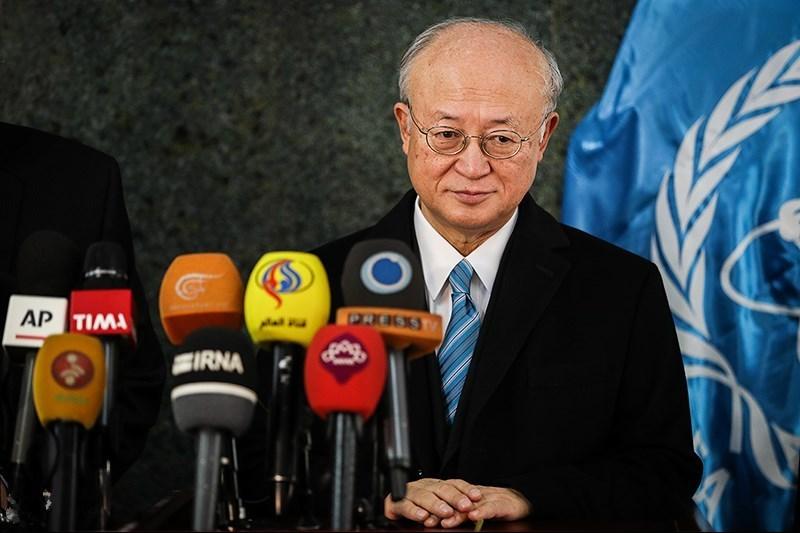
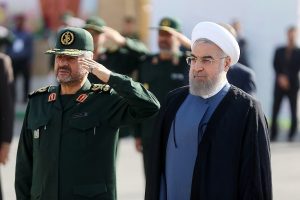
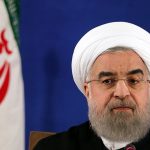
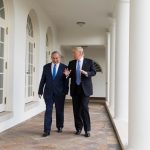
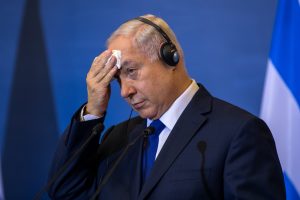
The whole Ayatollah nuclear program in Iran is suspect, if only because so much of the sensitive parts are hidden in civilian areas to prevent any attack harming them. The Ayatollahs are mad.
Iran’s “Green Salt” project was never a secret and in fact the Iranians proudly boast of it — they completed the Uranium conversion facility after the Chinese pulled-out of the contract under US pressure and they formally announced it to the IAEA in 2000, almost three years before the dramatic “exposure” of Iran’s supposedly secret enrichment program. The Israelis had labeled the former IAEA head ElBaradei as “an Iranian agent” because he refused to endorse the allegations against Iran since they were not verified. Amano, who according to Wikileaks had promised loyalty to the US, released the “secret annex” which listed the allegations against Iran but which contained nothing new. Wikileaks also showed that Amano had resorted to fundamentally changing the IAEA’s structure and personnel to suit the US. This was much the same as how the US ousted Boustani from the OPCW and replaced him with a more malleable head that also undertook changes to that organization to promote US interests. Iran was never in violation of the NPT, and every single IAEA report verified that all nuclear material in Iran had been accounted-for, which means that Iran was living up to its actual legal obligations. Nevertheless Iran repeatedly made compromise offers that the US ignored in favor of maintaining the “nuclear weapons” pretext for a policy of imposing regime-change there. Note that these offers were better than the JCPOA. Iran has bent over backwards to ally suspicions of nuclear weapons work, having even repeatedly suspended enrichment entirely for periods of years at a time, yet at every turn the goal posts are just moved farther away The Israeli pressure to undermine the JCPOA as well as the NIE before that, only further proves that the “Iranian nuclear weapons threat” is just manufactured nonsense and a pretext for regime-change. The last thing the Israelis want is for Iran and the uS to workout issues peacefully
Interesting information from a scientific and realistic point of view!
By allowing the Israeli operatives to believe they were raiding and smuggling 100,000 of sensetive documents and videos out of Iran (what Netanyahu calls ‘the archive’), Iran brilliantly succeeded to have Netanyahu as Iran’s best reliable agent to inform the Arab World and the World Powers that the Iranian scientists not only had the knowledge but that their nuclear weapon threat was too real, hence Netanyahu would make them believe in the importance of the 2015 nuclear agreement, and also Iran would have a better ground for the future in case the sanctions would not be removed as promised in 2015. But Netanyahu, with all its cleverness and his army of operatives willingly fell into the trap and failed to read the mind of the Iranian intelligence service!
Shemuel Meir
You are Ashkenazi and I will let your misinformation pass this time, but there never was an existential threat to Israel by a nuclear-armed Iran. As has never been one against Yehu d for the last 2500 years by Persians.